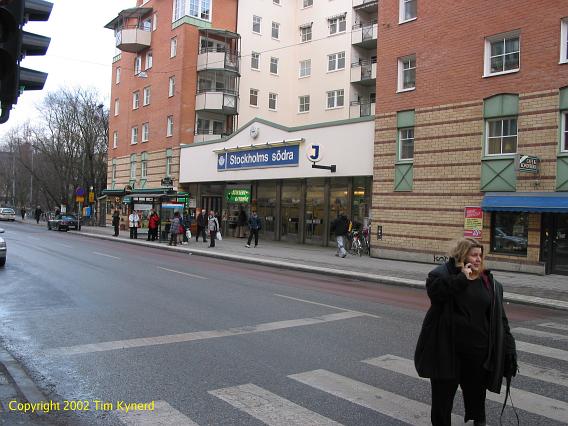
The original station was opened in 1860 and served trains to and from the south and west. The railroad line through central Stockholm, including Stockholm Central station, was not opened until 1871. This original station was built on the bed of a drained lake and lay out in the open. A passenger station building was built in 1926, but the platforms remained in the open until 1988, when the new station seen here, with four tracks and two platforms, was first used provisionally. It was officially opened in 1989.

(18 February 2002)
This view is of the Rosenlundsgatan entrance to Stockholms södra. The nearest subway stations are some distance away (the nearest, Mariatorget, is 4-6 long blocks away), so this station is very important to this part of Södermalm.
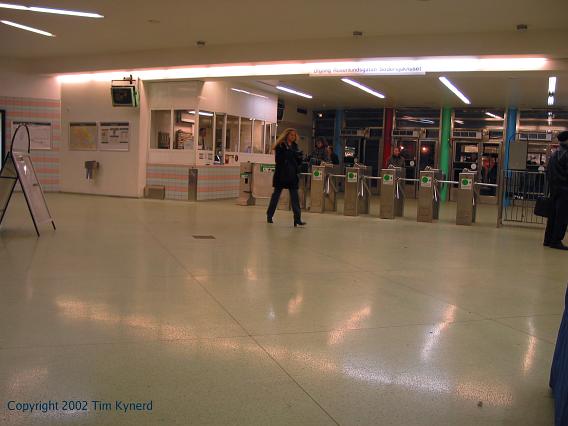
(18 February 2002)
The Rosenlundsgatan ticket hall, from inside the turnstiles. The northbound platform is downstairs and behind us to the right, and the southbound is downstairs and behind us to the left. To the left of the turnstiles is the ticket booth. Above and to the left of it is a monitor that shows scheduled train departures and status.
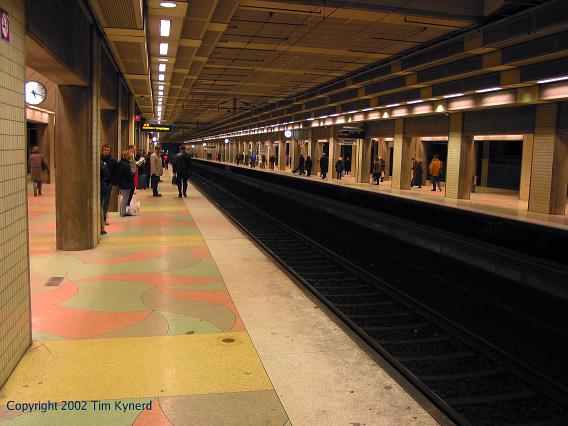
(18 February 2002)
The northbound platform, looking timetable north. The southbound platform is seen on the right, and behind the wall beyond it are additional tracks sometimes used by freight trains to bypass the platforms (but it isn't uncommon to see freight trains pass the platforms, especially off-peak).
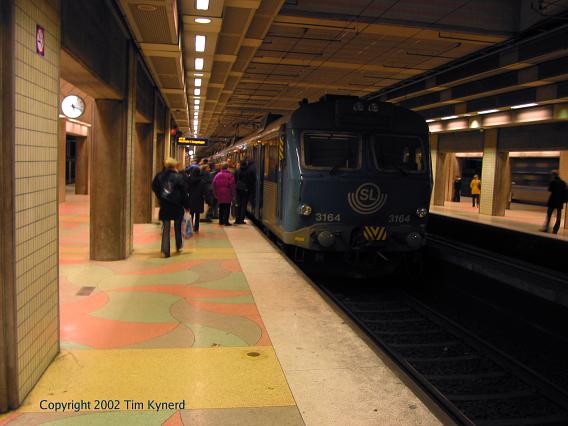
(18 February 2002)
The same vantage point as in the previous view. A northbound train (for Kungsängen) has stopped.

(18 February 2002)
Again the northbound platform. This view shows the escalators to and from the Rosenlundsgatan entrance.
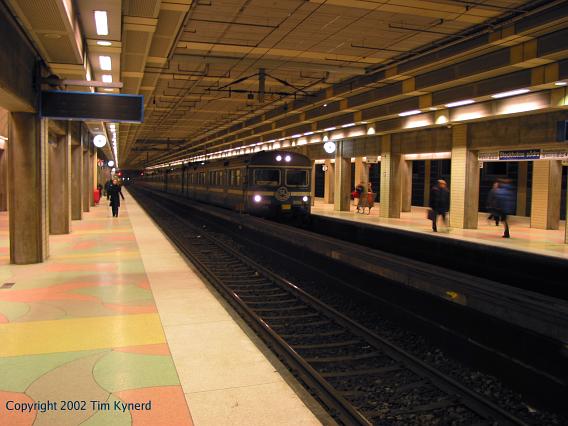
(18 February 2002)
From the northbound platform, we see a southbound train (for Södertälje, I think) arriving at Stockholms södra.
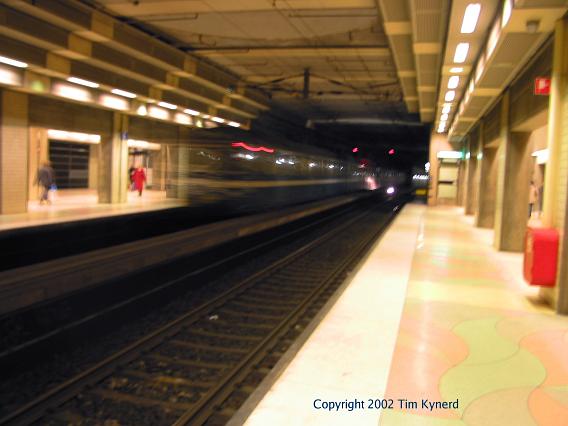
(18 February 2002)
The same southbound train leaving Stockholms södra.
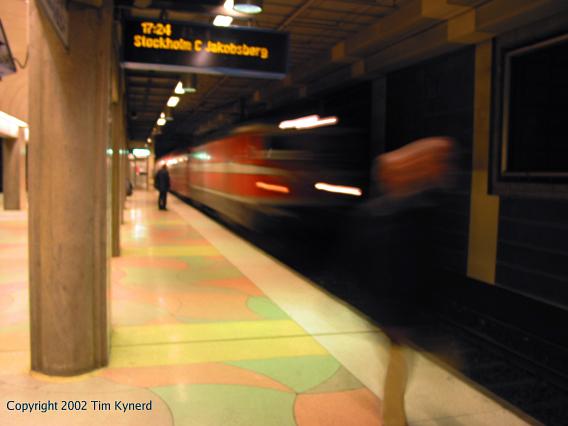
(18 February 2002)
For a period in early 2002, locomotive-hauled trains like these became an occasional sight in Stockholm's commuter rail service. The regular blue trains are EMUs, but these trains were made up of non-powered coaches leased from DSB, the Danish state railways. Here's one arriving northbound (for Jakobsberg) at Stockholms södra.
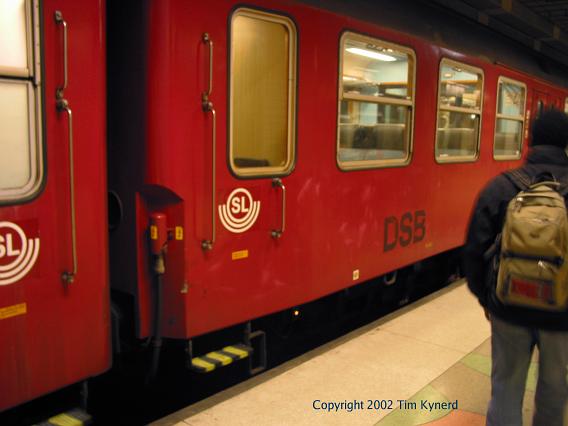
(18 February 2002)
A close-up view of the Danish stock. Note that SL has applied its logo so people can be certain that SL's tickets and passes are accepted on "dansktågen" ("the Danish trains").
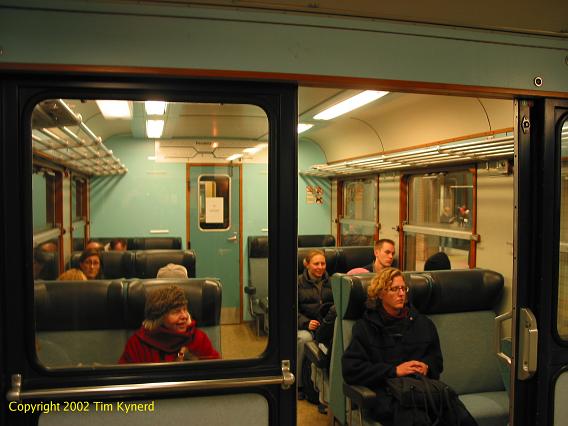
(18 February 2002)
The interior of one of the Danish cars.
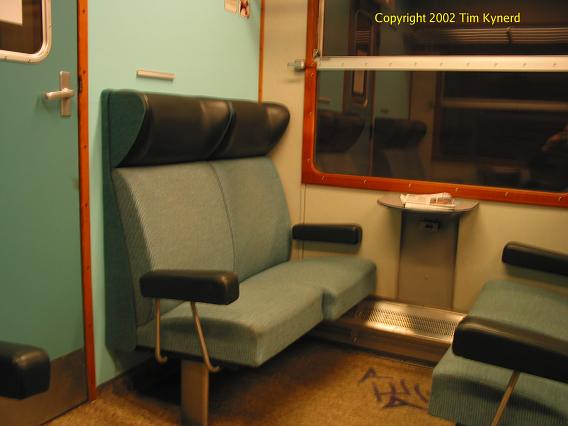
(18 February 2002)
A closer view of the seating in a Danish car.
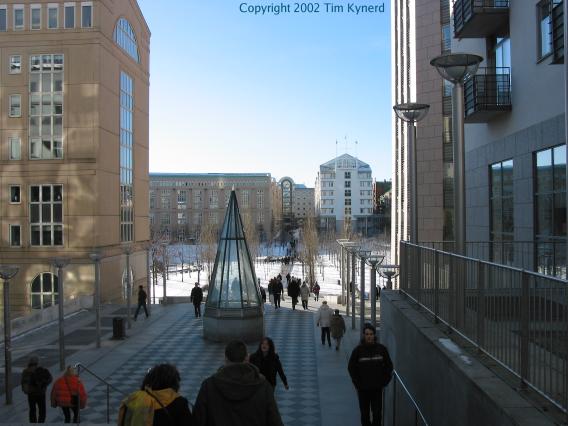
(24 February 2002)
The Swedenborgsgatan entrance to Stockholms södra, seen from a distance. It's the building with the tall vertical element, rounded at the top. Medborgarplatsen is behind us.
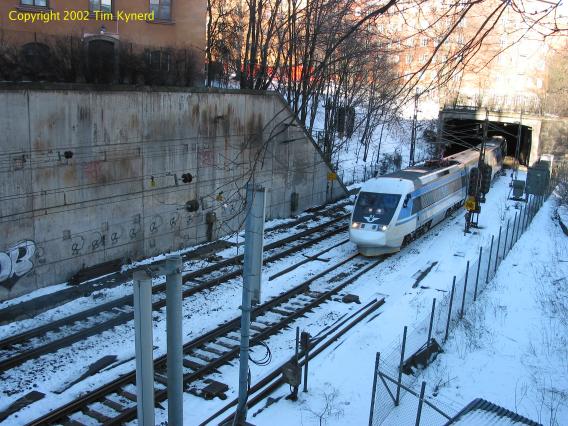
(24 February 2002)
An X2000 train approaches Stockholms södra southbound in the open cut that's timetable north of the station.
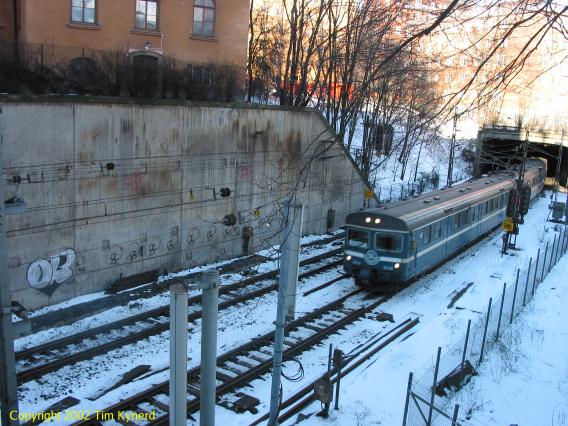
(24 February 2002)
A southbound commuter train approaching Stockholms södra in the same open cut.
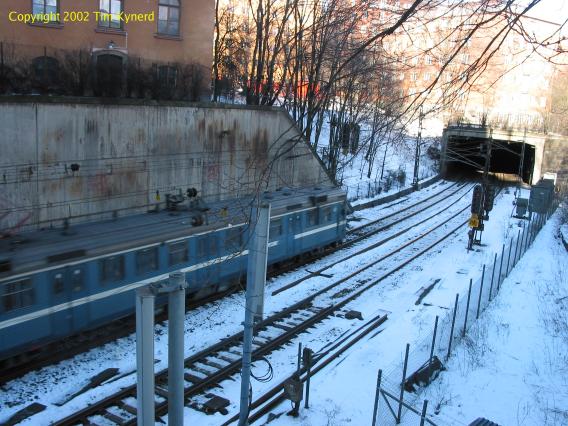
(24 February 2002)
A northbound commuter train (next stop, Stockholm Central) in the open cut north of Stockholms södra.
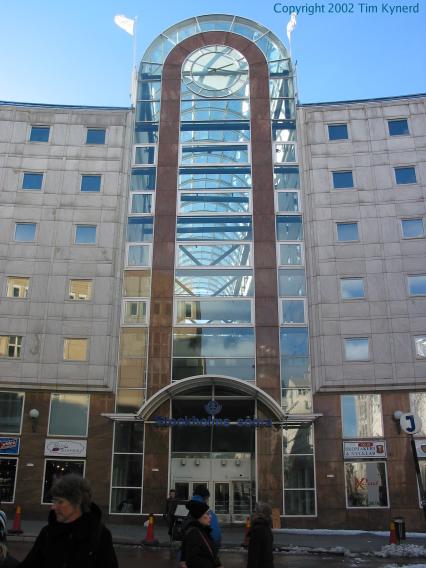
(24 February 2002)
A closer view of the Swedenborgsgatan entrance to Stockholms södra.
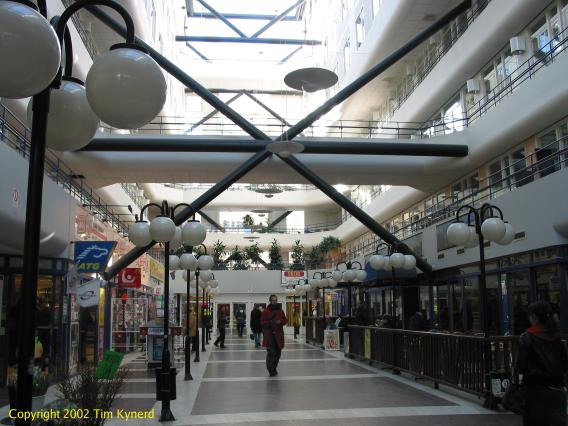
(24 February 2002)
This passageway from the Swedenborgsgatan leads to the ticket hall and platforms (ahead of us in this view).
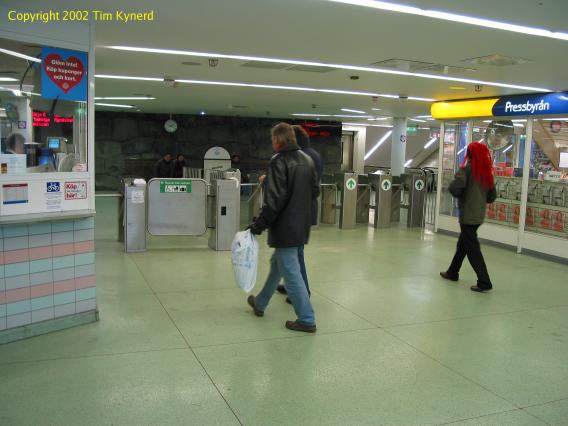
(24 February 2002)
The Swedenborgsgatan ticket hall.
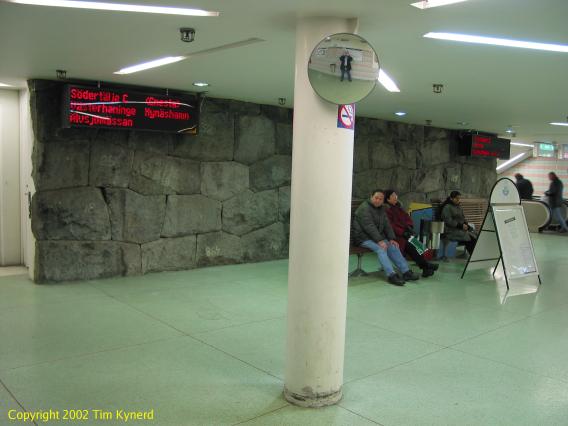
(24 February 2002)
Inside the platforms, these signs direct you to the correct platform (southbound to the left, northbound to the right).
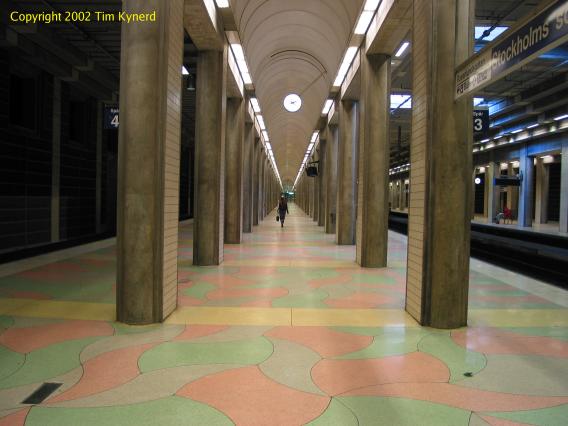
(24 February 2002)
Looking south along the center of the southbound platform.
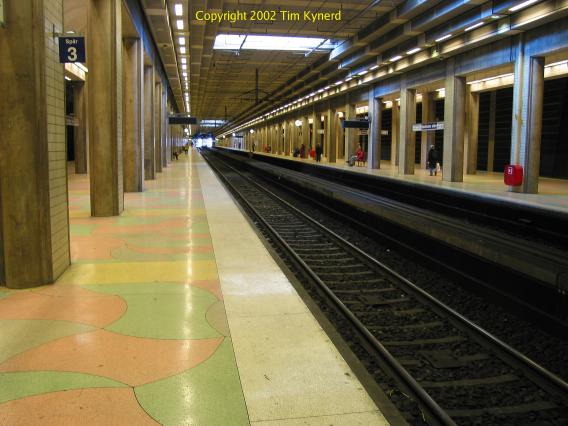
(24 February 2002)
From the southbound platform, tracks 3 (nearest us, a southbound track) and 2 (opposite, a northbound track).
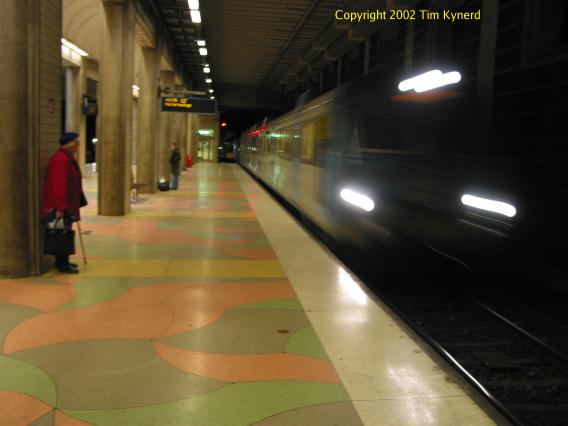
(24 February 2002)
A southbound train (for Västerhaninge) arriving at Stockholms södra.
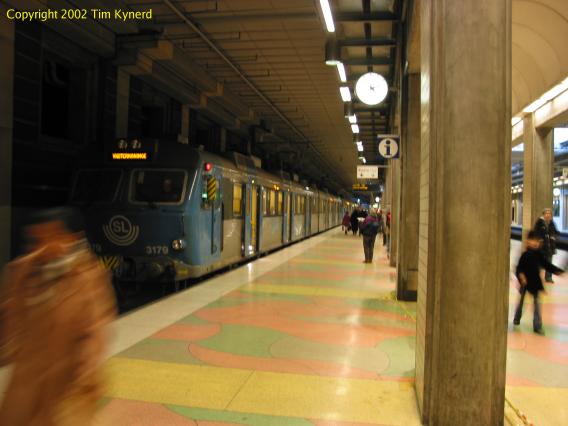
(24 February 2002)
The same train stopped on track 4.
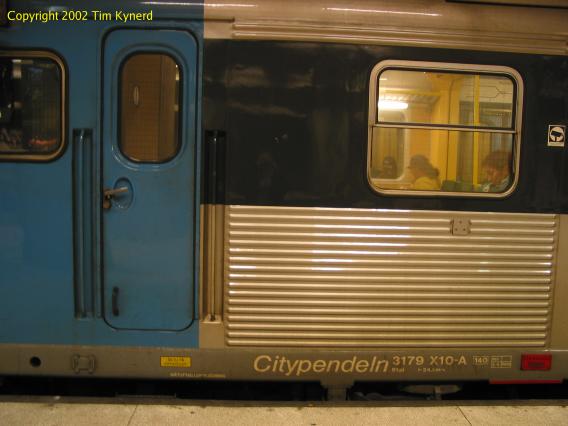
(24 February 2002)
This close-up of a car of renovated X10 EMU stock shows the name of Citypendeln, the operator of the commuter rail service.
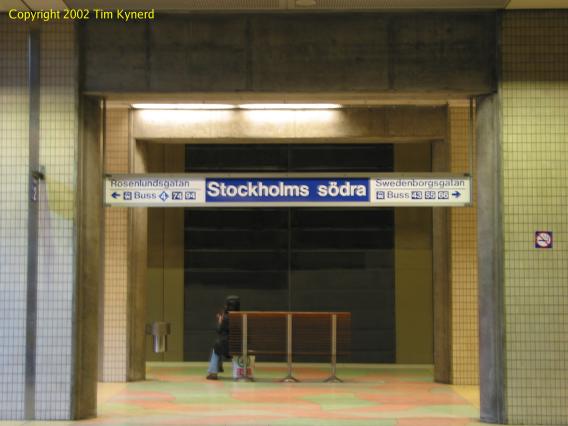
(24 February 2002)
From the southbound platform, a view of a station sign on the northbound platform.
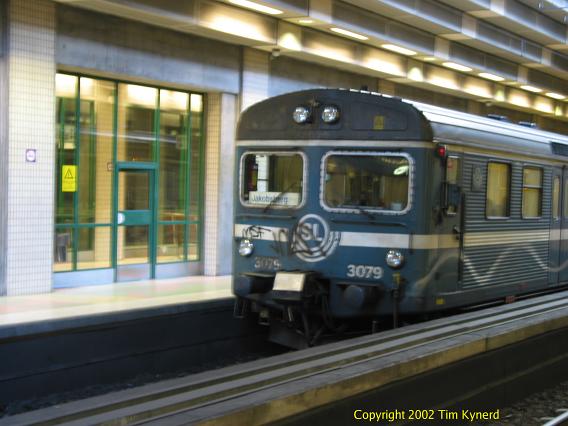
(24 February 2002)
A northbound train (for Jakobsberg). Yes, graffiti is a problem.